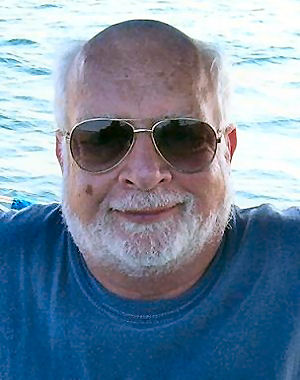 |
James W. 'Jim' Dow Ann Arbor, MI QCWA # 34368 Chapter |215|10| |
James W. Dow, Professor Emeritus of Anthropology, passed away on July 13, 2015. After earning his B.S. in Mathematics from the Massachusetts Institute of Technology in 1957, Professor Dow went on to earn his Ph.D. in Anthropology from Brandeis University in 1973. He began his career at Oakland University as a special instructor in 1970 and retired as a full professor in 2006. Much of his research was conducted in the Caribbean and Mexico, with an emphasis on the religious and shamanic practices of its indigenous peoples. This interest led Professor Dow to focus later on the evolution of religion in human culture more generally, and his theoretical concerns came to center in the field of evolutionary anthropology. His background in mathematics enabled him to contribute uniquely to mathematical modeling in anthropology. Professor Dow was a prolific publisher of several books and numerous articles in these fields and was a past president of the Central States Anthropological Society, one of the most important professional organizations in the field.
I became a radio enthusiast at the age of twelve, when I built my first battery operated tube receiver kit. While in high school in Newburgh, New York, I earned money by working as a repairman in a local radio store. In those days, vacuum tubes were the basis of all electronics, and you had to be careful when powering on any device. The voltages were serious. TVs were appearing in homes. and I repaired them too. Inspired by a friend, Mike Ginsburg, I worked on a general class license. There was no Novice class at that time.
In my last year of high school, I earned a scholarship to Phillips Academy in Andover, Mass. My parents were breaking up and it was a good opportunity to get away from home. I passed the general license test in Boston in the summer of 1951. On returning to Andover in the fall, I operated their school station, W1SW. My home QTH remained in Newburgh, and the station call there was W2MQL. At home, I operated mostly CW with a home brew transmitter. W1SW at Andover had a lovely little brick radio shack in the woods with two giant flagpoles that held a dipole fed by an open ladder line. In those days we modified old army surplus radios to work on the ham bands. The venue was surrounded by a pine forest reminiscent of the woods of Hogwarts of Harry Potter fame. The school allowed licensed students to go there when time allowed. It was a lovely inspiring spot that harkened back to the early days of radio.
On graduating from Andover, I entered the freshman class at MIT. I changed my major from Physics to Mathematics at the end of my freshman year. My interests went well beyond engineering, but ham radio was a hobby I loved. There I operated the university club station, W1MX. It was located in a Quonset hut in the married-student housing area, home to ex GIs taking advantage of their GI-bill education benefits. CW was the preferred mode of operation. Some of the families were living in mobile homes and we would light up a few trailer lights during a fierce contest. The transmitters were scavenged from radio parts set loose around the institute. They were put in a wire cage, not so much to control RF as to keep novices from getting electrocuted by the casual wiring. Only the club officers had keys.
After writing a thesis and graduating with a BS degree. I entered a long complex career that is another story. My ability to continue with ham radio declined and my W2MQL ticket eventually was not renewed. The year 1989 found me as a college professor with a Ph.D. doing field research in cultural anthropology in a remote region of Mexico with Otomípeaking natives. I cursed the lack of communication in the mountains, and it dawned on me: why not use ham radio to advantage. While back in the states, I contacted a local club in Mount Clemens, Michigan, the Utica-Shelby Emergency Communication Association (USECA), where Walt Gracey (WB8E) helped me to revitalize my interest and skills. In a short time I was back on the air as N8KSL with an extra class license.
In Mexico, I applied for reciprocal privileges as XE3N8KSL. Using SSB equipment I was able to get phone patches on 20m to the and talk to family and friends. I was surprised by the number of ham friends I made in Mexico. This was an unexpected pleasure. I checked into the Red de Emergencias every week when I could on 7.075 MHz. I joined the Tulancingo radio amateur club, which maintained a 2m repeater on a nearby mountain. With this repeater and one of the local M.D. hams who kept his transceiver going while working in the emergency department of the Metepec hospital, I was able so save at least one life. I had many adventures with my radio at my side in Mexico.
When I returned to the states, I kept my interest in emergency communications and worked with the Oakland County, MI, Amateur Radio Public Service Corps in the 1990s and later with Arrow Communications and the Red Cross in Ann Arbor.
I retired from teaching in 2006. I moved to Ann Arbor in 2012, and I continue to be a member of the Arrow group.